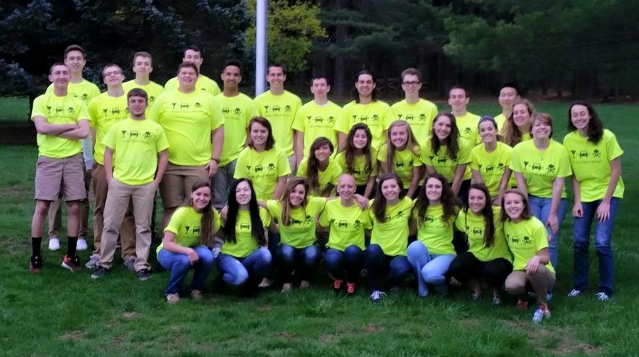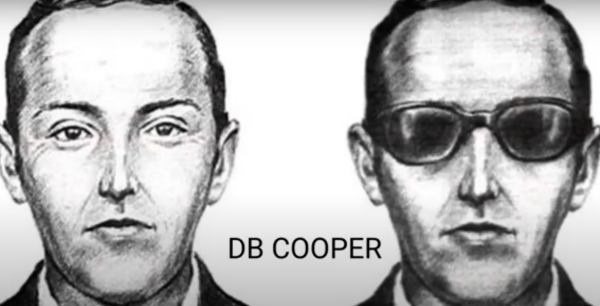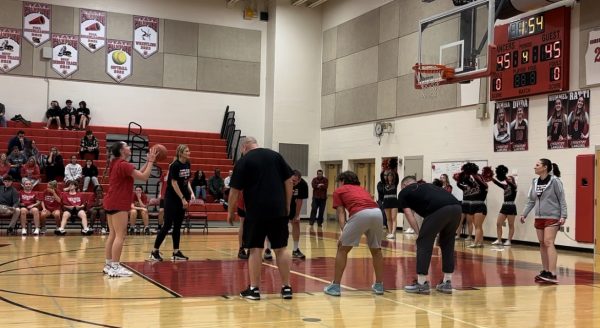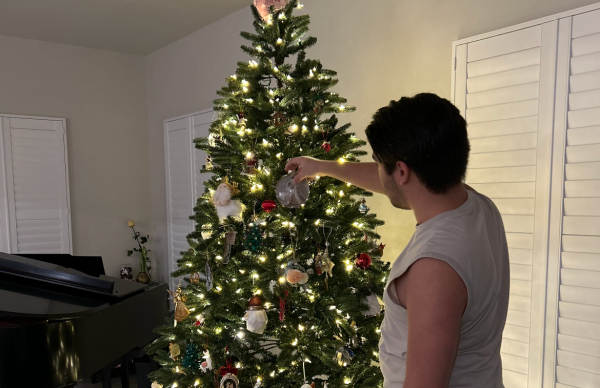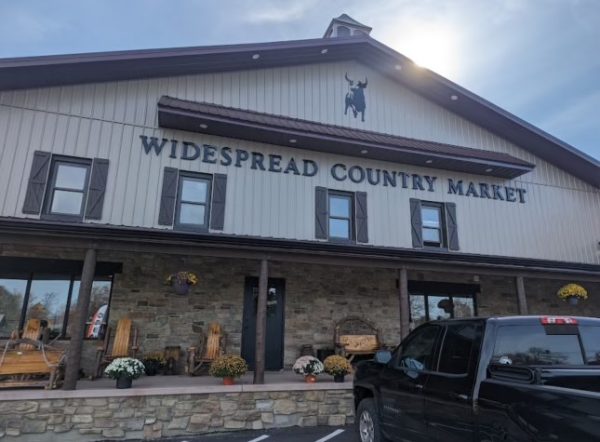Every 15 Minutes: VOIDS learn about voids resulting from a death
VOIDs (from left to right) Back row: Thomas Lang, James Ensor, Carter Schmidtt, Robert DeShazor, Matthew Demember, Justin Knotts, Jared Tibbs, Kyle Johnson, Alan Flint, Noah Garabedian, Riley Bruning, Matthew Watson, Robert Milburn, Abi Bladen Middle row: Zach Yurich, Chaney Shultz, Emile Kessing, Elena Nicoll, Amy Safsten, Alli Hammersla, Sydney Clark, Julia Peigh, Bailey Tregoning Front row: Sabrina Moxley, Moe de la Viez, Olivia DuBro, Ashley Zink, Harper Lindsay, Rhianna Lapen, Elizabeth Coletti, Maria Pellicier
May 7, 2015
There was no saying goodbye, no final hugs, no contact with the outside world: It was like we were dead. We were gone, and it was too late to go back and make a different decision.
My twenty-four hours as a VOID in the Every 15 Minutes Program at LHS was a life-changing experience.
April is Alcohol Awareness month, and the timing is no coincidence. April marks the beginning of end-of-the-year celebrations including prom, graduation, and senior week. The months of April, May and June are the most perilous to teens. Approximately one-third of the alcohol-related traffic fatalities involving teens each year occur during these months.
The Every 15 Minutes Program is designed to open the eyes of students by showing them the impact a drunk driving crash could directly have on their lives. By pulling the students peers out of class without warning or clear explanation, students are left confused and possibly scared. The school deputy comes to a classroom, informs the students there has been an accident, and reveals that the student leaving class is now deceased due to the crash.
At Linganore, this took place April 22-23.
The students who are taken out of class, called VOIDs — which stands for Victims of Impaired Driving — are confined to a windowless classroom for the rest of the school day. VOIDs are not allowed to talk to friends, girlfriends/boyfriends, family members, or teachers for the rest of the day. The only contact they may have is with other VOIDs.
This happens while the rest of the school is witnessing a simulated drunk driving crash; complete with EMTs, police officers, DUI tests, fake blood, wrecked cars, ambulances, and frantic 911 calls.
The E15M Program at Linganore was designed and planned by junior Noah Ismael under the guidance of staff members Jeremy Brown and Paula Larson. With help from a planning committee of faculty members; community members; and students Ashley Zink Chaney Shultz, Julia Peigh, and Amy Safsten; 27 students were chosen to be VOIDs.
According to Ismael, VOIDs were chosen for their leadership, academic eligibility, and openness to share their experience with those around them.
VOIDs were told about the program in February, approximately two months before the program took place. When I was chosen to be a VOID, my mother was hesitant to support my role in the program.
“The idea of losing you, even if I knew it wasn’t real, absolutely terrified me. I was also worried about the emotional effect it would have on you. I didn’t want you to be depressed afterward,” my mom shared with me.
After a long day of being hidden away, VOIDs went on an overnight retreat to Summit Lake Camp.
The afternoon at Summit Lake began with light, silly activities such as drunk goggle experiments and crafts. After dinner, things began to feel heavier. Groups discussed questions that forced them to think about what it would be like if they had really died. They explored topics like eulogies and their parents’ reaction to news that they had passed away. They imagined what it would be like to deliver the news to their families.
“I think the overnight experience helped all of us to realize that we all have an effect on each other. There were people from all different groups there, but at the end of the retreat we understood that even one of us being gone would impact basically every friend group around them,” said Noah Garabedian.
The bus ride home was quiet. After a night of bonding and discussing emotional topics, everyone hoped the assembly they were about to attend at Linganore would have a similar moving effect on the other students.
All juniors and seniors attended the assembly during first period on April 23, 2015.
At the beginning of the assembly, Frederick County 911 operators shared the importance of their jobs after a drunk driving crash.
Then, a video, produced and edited by senior Moe de la Viez, provided a backstory to the crash that students had seen the day before. Senior Ally Hammersla was seen chugging drinks at a get-together with friends. She then grabbed her keys and got into her car.
The video then showed the crash scene from the day before. The passenger from her car (Rhianna Lapen) was strewn across the hood. Stage makeup was used to make the scene bloody and realistic. The sheriff performed DUI tests on Hammersla, and she was taken into custody. The victims in the other car (Justin Knotts and Carter Schmidt) were removed from the demolished car. Knotts was put into the ambulance on a stretcher.
The video continued to show Knotts dying in the ambulance and EMTs failing to revive him.
Hammersla then went to trial. Both she and her mother gave apologies and acknowledged her wrongdoing. She was sentenced to 18 months in a juvenile detention center, community service, and Alcoholics Anonymous meetings.
After the video, Debbie Yohn, a hospital trauma nurse and member of the Positive Alternatives to Dangerous and Destructive Decisions, asked students to visualize a night drinking with friends. She vividly described a crash and the hospital experience of a passenger. At the end of the story, she revealed that this was a true story and she had been the passenger. The experience was the reason she chose to be a trauma nurse.
The assembly concluded with speeches from VOIDs. Carter Schmidt and I decided to represent the group and speak.
Carter spoke first. “We were all asked if there was anything we wanted to say today on the bus. We all wanted to come up with something that would move you, but we didn’t really know how. In the last twenty-four hours we’ve had a lot of serious talks with each other, and they were very heartfelt. I know that yesterday was just a situation that wasn’t real, but we all need to remember that this could be real. We have to remember that any given day, it could be someone in our community. It could be you. We have to remember the effects of our actions before we do something. ”
Continuing his idea, I followed, saying, “The Linganore community has been very fortunate to not have an incident like this for a while, but that could change in just a matter of seconds. But you don’t realize, as cliche as it sounds, you have a ripple effect. When you pass away, it doesn’t just affect your immediate family or your best friend or your boyfriend or girlfriend. It affects the entire community. Last night, we did an exercise that I think all of us should do.
“Everyone close your eyes again. Imagine the people you would never get to say goodbye to if you were to pass away right now. Imagine those people finding out you’re not coming home; that you’re not going to hug them again. You never get to say ‘I love you’ or ‘I’m sorry.’ Imagine the people you don’t even realize might miss you: your teachers, the administration, the quiet kid you sit next to in class. You have an effect on everyone, so think of all of these people before every single one of those decisions.”
After the assembly, VOIDs were given back their phones. We were instructed to call, not text, our parents and let them know we were safe.
“When I heard my mom’s voice, I started crying. The idea of never hearing it again was so awful,” said VOID Harper Lindsay.
VOIDs were sent back to class, but the emotions were still high during the day.
Jeremy Brown, a Linganore teacher and program planner, shared that, “when the [VOIDs] got back to ‘regular mode,’ the students began to feel the ‘realness’ of the program sink in. They were also on their own now. They had to face the rest of the day without the comfort created by the group.”
The latest study by British researchers suggests that “at least one-third of all people involved in nonfatal accidents have posttraumatic stress disorder, persistent anxiety, depression, and phobias [at least] one year after the incident.”
VOIDs experienced emotions very similar to someone who had been in an actual crash.
School counselor Ilana Blum said, “I don’t think the students expected the incredible emotions that followed the program. In the future, those students could benefit from a bit more time to process their experience upon returning to school.”
“I think it got others to think about their actions a little more. The people who were on the retreat got more from this experience, but it was designed that way,” said Ismael.
This experience will be something VOIDs remember for a long time, if not the rest of their lives. We can only hope the rest of the Linganore students heard the message the Every 15 Minutes program conveyed loud and clear. Stay safe, Linganore.


